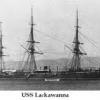-
Posts
6,381 -
Joined
-
Last visited
Content Type
Profiles
Forums
Gallery
Events
Everything posted by Canute
-
You could use a ratter dog, some kind of terrier. Wise move on quitting smoking; I lost several relatives, including my Mom, to smoking. Lula is looking good, but as some have said, it needs some clutter.
- 732 replies
-
- Lula
- sternwheeler
-
(and 1 more)
Tagged with:
-
Good luck with your doctor, Keith. Hope it all gets resolved safely. We're rooting (and praying) for you.
- 732 replies
-
- Lula
- sternwheeler
-
(and 1 more)
Tagged with:
-
Turkey ended up with a good number of my unit's F-4Es back in 1991. I missed the delivery flights because I was the trial WSO to go to tanker school at Castle AFB, CA. Later on, when we were in Pisa, supporting the shenanigans in Bosnia, the Turkish F-4s sported our nose art of the Tiger heads. The rest of the markings reflected the Turkish AF. I look forward to seeing your build of one of those Z-M Phantoms. 😁
-

Steam Dredge by Crow River Products in 1:48 scale
Canute replied to Keith Black's topic in Plastic model kits
He's a long time supplier to the model rr folks. Supplies a craftsman kind of kit with very good instructions. Lots of cutting and fitting. -
The cardio docs are tracking this via the echocardio tests and some blood test. The test measures an enzyme level that is a signpost for how hard your heart is working. My last test showed my heart improving with the stents and medication I'm taking. 👍 Used to be some serious operation opening the chest and heart to implant a new valve. Nowadays they can go thru an arm or femoral artery. And implant either a mechanical or animal based valve. The medical field has so many options now.
- 732 replies
-
- Lula
- sternwheeler
-
(and 1 more)
Tagged with:
-
Wow, there's finally a break in the action for me to answer a question or 2. I think the bad valve may have started back in the Dark Ages - mid 1990s - while in the Air Force. It became noticeable about 2018 and my cardiac doctors have been tracking it since then. We changed cardio docs last year, mostly due to some over treatment issues my wife had encountered(shes an RN and not to be trifled with in medical affairs). The new crew was/is much more aggressive in treatment. They believe in their tests. Anyway, the leaky valve is still there, but I have an echo scheduled next month or whenever it is Medicare allows them to do another test. Bureaucrats - phooey. Good luck with your medical processes.
- 732 replies
-
- Lula
- sternwheeler
-
(and 1 more)
Tagged with:
-
You're both on my prayer list Keith. I'm in a similar boat with wife being the sick one right now. I'm under a watchful waiting period with my leaky aortic heat valve, too.
- 732 replies
-
- Lula
- sternwheeler
-
(and 1 more)
Tagged with:
-

Honda RC166 by DocRob - FINISHED - Tamiya - 1/12 - multimedia
Canute replied to DocRob's topic in Non-ship/categorised builds
Another outstanding build, Rob. Beautiful finish.
About us
Modelshipworld - Advancing Ship Modeling through Research
SSL Secured
Your security is important for us so this Website is SSL-Secured
NRG Mailing Address
Nautical Research Guild
237 South Lincoln Street
Westmont IL, 60559-1917
Model Ship World ® and the MSW logo are Registered Trademarks, and belong to the Nautical Research Guild (United States Patent and Trademark Office: No. 6,929,264 & No. 6,929,274, registered Dec. 20, 2022)
Helpful Links
About the NRG
If you enjoy building ship models that are historically accurate as well as beautiful, then The Nautical Research Guild (NRG) is just right for you.
The Guild is a non-profit educational organization whose mission is to “Advance Ship Modeling Through Research”. We provide support to our members in their efforts to raise the quality of their model ships.
The Nautical Research Guild has published our world-renowned quarterly magazine, The Nautical Research Journal, since 1955. The pages of the Journal are full of articles by accomplished ship modelers who show you how they create those exquisite details on their models, and by maritime historians who show you the correct details to build. The Journal is available in both print and digital editions. Go to the NRG web site (www.thenrg.org) to download a complimentary digital copy of the Journal. The NRG also publishes plan sets, books and compilations of back issues of the Journal and the former Ships in Scale and Model Ship Builder magazines.





